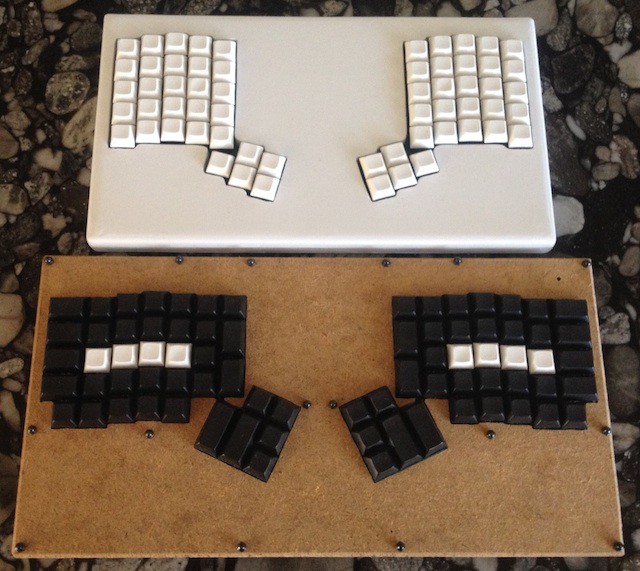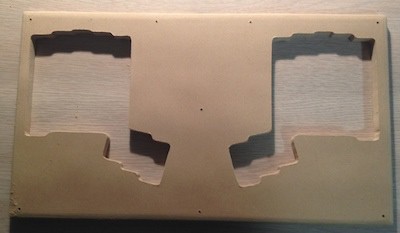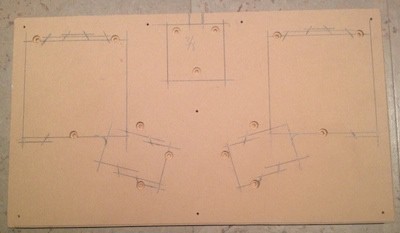60 key ergonomic keyboard
To make the experience fit your profile, pick a username and tell us what interests you.
We found and based on your interests.
Here you can see the difference between my Ergo60 and my ErgoDox (with custom cover plate).

I got the case pained and everything put together over the long weekend and I've been using the keyboard both at home and work since then and overall it's extremely usable; of course I'm coming from Kinisis Advantage and Ergodox so I'm already used the the basic form factor.
Today I took the opportunity to merge my local git repo for the project into the projects repo at digital cave so the source is now available online.
The layout I've settled on which seems to be working quite well for me is based on Dvorak with the following adaptations:
the bottom row of hand keys serve a dual purpose with both key actions and modifier actions: -_/shift =+/ctrl left/alt right/cmd fn fn up/cmd down/alt [{/ctrl ]}/shift
the ;: key and zZ key are dual with shift since as well
the thumb cluster top row is /? \| `~ §±
the thumb cluster bottom row is bksp del esc tab return space
The fn layer is fully populated as well with a numeric keypad, function keys, dpad, and media keys.
For those that are interested the layout header files in the source code show this information in a far more readable way.
It still needs a bit of sanding in some of the tight spots but I now have the top panel openings cut. (with Photos)


Over the weekend I got all of the diodes and keys soldered onto the PCBs, and connected all the PCBs together. There were a couple of small problems: one unconnected pad on the right thumb cluster (grrr!); and the left thumb cluster columns were swapped (so just incorrect silk screen). I also got the bottom plate of the case made and all the boards mounted. I just ordered key caps from Signature Plastics, and I still have to cut the openings in the top plate of the case.
Boards arrived from Seeed Studio today. They look fantastic. Placed the order for switches and diodes just now with Digikey so those should arrive tomorrow.
Designed cutouts and routing for case. The case is going to be cut out of MDF for now.
Ordered boards from Seeed studio on Monday.
Create an account to leave a comment. Already have an account? Log In.
Become a member to follow this project and never miss any updates